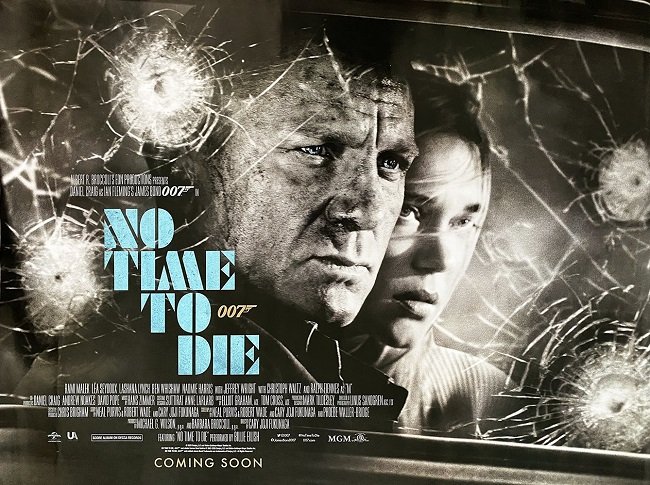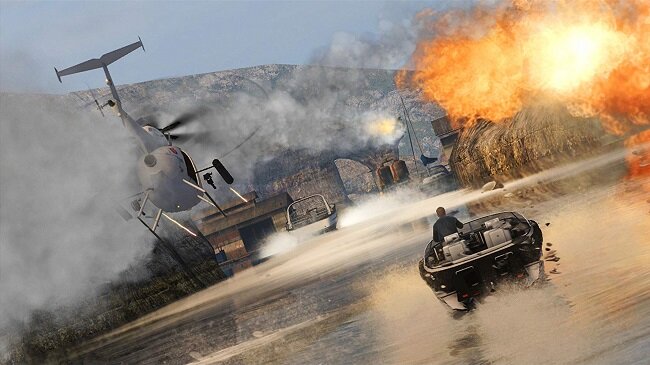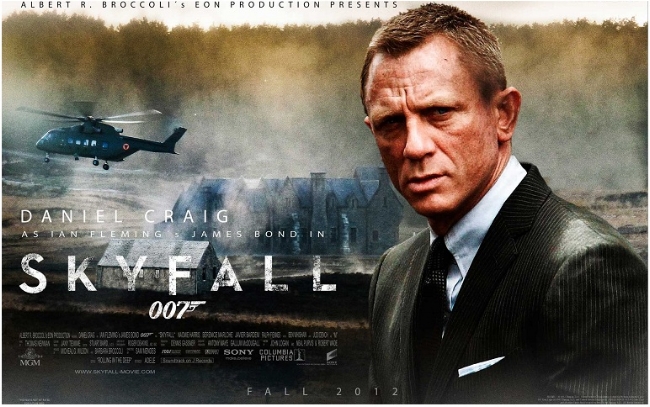The Living Daylights (1987)
Timothy Dalton is possibly the most technically accomplished and prestigious actor to have played the iconic MI5 agent, James Bond. He was in fact asked by Cubby Broccoli to play the role back in 1969 shortly after Connery's departure from the franchise. Broccoli had been impressed by Dalton’s performance in The Lion in Winter. However, Dalton himself felt he was too young for the job at the time. After Roger Moore retired from the role in 1985 it looked like Pierce Brosnan would certainly to get the part. However, due to contractual reasons and prior commitments, he was not unable to fulfil the proposed shooting schedule. So, Dalton landed what was at the time, the most prestigious action role in film making, by default.
By 1987 there had been a major shift in the production of action movies. The traditional spy genre was in decline. "Cop Buddy" films were becoming increasingly popular and relying more on the major set pieces to bolster their appeal. The ubiquitous action hero was being transformed by such films as Lethal Weapon, Die Hard and Rambo. The expensive and complex action sequences that had for over a decade had been the exclusive province of the Bond franchise, were now becoming common place in many other movies. The competition was raising their game, so Bond needed to modernise and shake off some of the more archaic aspects of his heritage if he wished to remain a viable franchise. The change of actor presented the production with an ideal opportunity to address this very issue.
Director John Glenn decided to use Daltons acting skills as an opportunity to go back to basics and return Bond to the character found in the Fleming’s books. Out went the one liners to soft pedal the violence, that Moore had made his own during his tenure. The screenplay by Ricard Maibaum and Michael J. Wilson therefore maintained the charm along with the panache but it also introduced a ruthless and somewhat cold edge to Bond’s personality. Furthermore, the plot was dialled back from previous extremes to tell a more grounded story set in against the contemporary issues of the time. As a result, Bond this time round, finds himself up against rogue KGB officer, General Georgi Koskov (Jeroen Krabbé), who rekindles an old feud between the two governments respective security services, as a cover for his illegal arms and drugs trafficking in Afghanistan. As another concession to changing times was a subtle reduction in Bond’s promiscuity and a female lead (Maryam d'Abo) who had more depth than usual.
The Living Daylights is therefore a revisionist entry into the series. It stands out along with On Her Majesties Secret Service and For Your Eyes Only as being closer in spirit to the source text. As ever with the franchise this instalment has some very good action sequences and the hand to hand fights scenes are gritty and tough. This was the first film where Bond head butts an opponent, a move that had previously deemed “out of character”. The villainous Necros (Andreas Wisniewski) has a particularly vicious fight with a MI5 agent and at a one point, holds his face against a hot grill. It is a notable change of tone from the camper Roger Moore era. The Living Daylights also has less reliance on the ubiquitous gadgets of "Q" branch. They are present but not quite as preposterous. The overall effect of all these changes was to bring the series back in touch with reality after decades of excess and comic banter.
The Living Daylights also marks the last soundtrack in the Bond franchise to be scored by the great John Barry. He had up until this point written the score for eleven of the Bond films. His contribution to Bond per se is invaluable and certainly his unique lush style helped shaped the image and perception of the character. The title song for the movie, by Swedish band A-ha (Co-written by Barry) works very well as a signature motif throughout the film. The music cues used during Bonds roof top escape in Tangiers and the airfield battle in Afghanistan make use of clever variations of this theme. The film also features two songs by The Pretenders, who at one point were contracted to provide the title theme. However, the producers felt that A-ha were more commercially viable and hoped to repeat the success that they’d had with Duran Duran in the previous film. As ever the material from The Pretenders is of a high standard and Barry manages to work instrumental arrangements of both songs into both the romantic and action scenes. However, it is the piece Barry composed for the "Mujahadin" that stands out the most in the film. Its simplistic beauty encapsulates his talent and remains an example of his finest work.
The pre-digital visual effects work in The Living Daylights are also of note. Industry veteran John Richardson does wonders with traditional methods and techniques. The scale model Lockheed C-130 Hercules used at various points in the film is utterly convincing and the destruction of the Afghan trestle bridge at the film climax, is achieved by the use of a foreground miniature. The aerial sequences featuring stuntmen BJ Worth and Jake Lombard still impress thirty years on. Once again this proves how physical effects and genuine stunts have a great sense of credibility over their computer-generated counterparts. The climactic battle between Bond and Necros in the open cargo bay of a Hercules transporter is a benchmark in eighties action sequences.
Despite changes in public tastes and attitudes The Living Daylights still performed well at the box office. Critically the new bond movie met with a mixed reception but by and large Timothy Dalton was praised. His performance it tonally spot on and his acting range is more than adequate for the scope of the role. As an action movie it is well structured, involving with first class production values. As a Bond movie The Living Daylights has enjoyed a reassessment in recent years and is now seen as a wise change in the franchise’s game plan. However, as the eighties were drawing to a close, the producers were becoming increasingly concerned about the future of the franchise. They decided to tackle the competition head on with the next entry but the radical change in tone along with poor marketing ended up putting James Bond on hiatus for the next six years. It’s a shame because Dalton was never given an adequate chance to build a relationship with fans. I suspect he could have gone on to have made at least two more compelling movies but sadly he fell victim to production delays that ensued.













